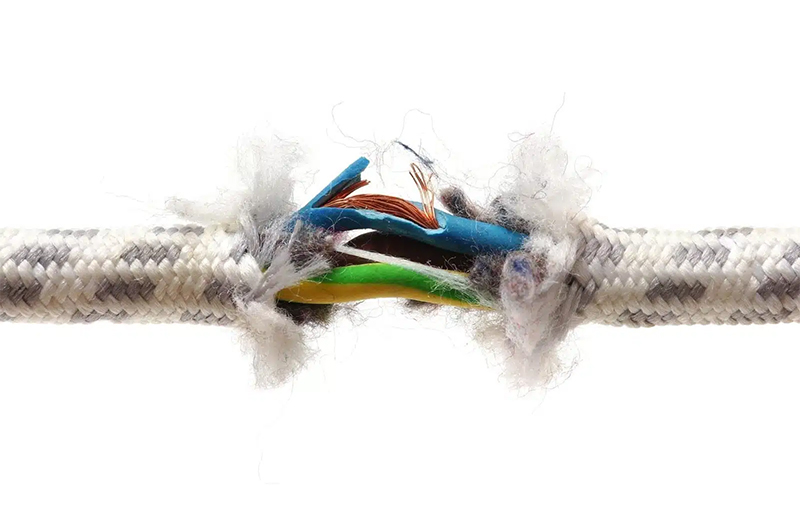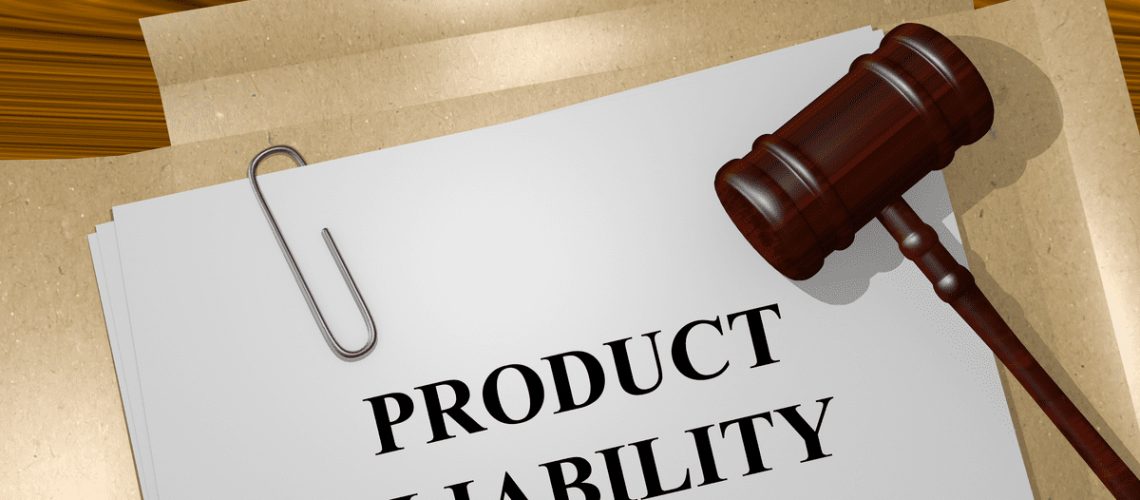Definition of Defective Products
Defective products are items that pose a threat to consumer safety due to design flaws, manufacturing errors, or failure to include proper warning labels or instructions.
The term “defective product” refers to any consumer goods, ranging from household appliances to vehicles, that do not meet reasonable expectations of safety and performance.
In situations where a defective product causes harm or injury, consumers have the right to pursue a product liability claim.
Product liability laws are in place to protect consumers and hold manufacturers, distributors, and suppliers accountable for the dangers their products pose.
In 2021, 11.7 million people were treated in emergency departments for injuries resulting from consumer products. Most of the injuries involve everyday products often assumed to be safe. [1]
Definition of Product Liability
Product liability is a legal concept that holds manufacturers, distributors, suppliers, and retailers responsible for the defective and dangerous products they make available to consumers.
It encompasses the legal responsibility of all parties involved in the supply chain for any harm or damage caused by the product.
This includes product designers, manufacturers, wholesalers, retailers, and even sometimes advertisers.
Product liability laws are designed to protect consumers by ensuring that they are able to seek compensation for any injuries or damages caused by defective products.
These laws also provide an incentive for manufacturers and other parties in the distribution chain to ensure the safety and quality of the products they offer.

Types of Product Defects
Understanding the different types of defects can help consumers identify potential hazards and take appropriate action.
Manufacturing Defects:
These defects occur during the manufacturing or production process of a product. It means that there was an error or flaw in the manufacturing that resulted in the product being different from its intended design.
Examples of manufacturing defects include missing parts, faulty components, or incorrect assembly. In such cases, the product may be deemed defective even if the design itself is safe.
Design Defects:
Design defects, on the other hand, involve flaws in the initial design of a product. This means that the product's design, as created and intended, poses a foreseeable risk of harm to consumers. Even when manufactured correctly, a product with a design defect may still be dangerous or prone to malfunction.
Examples of design defects include inadequate safety features, unstable structures, or using unsafe materials.
Warning Defects:
Sometimes, a product may be inherently dangerous or have certain risks associated with its use. In such cases, manufacturers should provide appropriate warnings and instructions to users about these potential dangers. A warning defect occurs when a product fails to adequately warn consumers or provide clear instructions regarding the proper and safe use of the product.
This can include failing to warn about possible side effects of a medication or not providing instructions for the safe operation of heavy machinery.
Different jurisdictions may have varying interpretations and requirements for these defect types. However, the basic concept remains the same – a defect that can cause harm to consumers can arise from manufacturing flaws, design flaws, or inadequate warnings.
Forms of Product Liability Claims
When a defective product causes harm to a consumer, there are different forms of product liability claims that can be pursued. These claims aim to hold the responsible parties accountable for the injuries or damages caused by the defective product. Here are some common forms of product liability claims:
- Negligence:
Negligence is a common basis for product liability claims. In a negligence claim, the injured party must prove that the manufacturer, designer, or distributor of the product failed to exercise reasonable care in the design, manufacturing, or distribution process.
This could include failures in quality control, inadequate testing, or ignoring known risks associated with the product.
- Strict Product Liability:
Strict product liability laws hold manufacturers and sellers responsible for injuries caused by defects in their products, regardless of negligence. Under strict liability, the injured party does not need to prove negligence or intent on the part of the manufacturer. Instead, they must demonstrate that the product was defective and that the defect caused their injuries.
This form of liability places the burden of ensuring safe products on the manufacturers and sellers.
- Breach of Warranty:
A breach of warranty occurs when a product does not meet the promises or guarantees made by the manufacturer or seller. There are two main types of warranties: express and implied. Express warranties are specific statements or claims made by the manufacturer about the product’s performance or safety. Implied warranties, on the other hand, are automatically imposed by law and guarantee that the product is fit for its intended purpose. If a product fails to meet these warranties and causes harm, the injured party can pursue a breach of warranty claim.
It is important to note that these forms of product liability claims can often overlap, and multiple claims can be brought against the responsible parties simultaneously.
By understanding the different forms of product liability claims, consumers can make informed decisions and take appropriate legal action to protect their rights and seek fair compensation.
Product Liability Laws and Regulations
State Laws and Regulations
State laws and regulations play an important role in protecting consumers and addressing product liability issues. While there are federal product liability laws in place, states also have their own unique laws to ensure consumer safety further and hold manufacturers accountable for faulty products.
These state laws often supplement and complement federal regulations, allowing for a more comprehensive approach to product liability.
One aspect of state laws is that they may provide additional protections and remedies for consumers beyond what is offered by federal law.
States have the jurisdiction to impose stricter standards and requirements on manufacturers and sellers, which can help further safeguard the public from dangerous and defective products.
For example, a state might have a lower threshold for proving negligence or impose more stringent labeling and warning requirements.
State laws can also influence the statute of limitations for product liability claims. In other words, they determine the timeframe within which a consumer must file a lawsuit after discovering a defect or suffering harm.
These statutes of limitations can vary from state to state, meaning it’s important for consumers to be aware of the specific time limit in their jurisdiction. Failing to file a claim within the prescribed timeframe can result in the forfeiture of their right to seek compensation.
Different states may have different legal principles, such as comparative negligence or joint liability, which can affect how liability is apportioned among multiple parties involved in a defective product case.
Understanding the nuances of these legal doctrines is essential for both consumers and product liability attorneys when navigating the legal landscape.
Certain states may have specific regulations in place for the safety of food products or household items. These state-specific regulations help ensure that manufacturers and sellers are adhering to the highest safety standards and are held accountable for any harm caused by their products.

Federal Laws and Regulations
While state laws provide additional protections, federal regulations provide a baseline of standards that must be met by all manufacturers and sellers across the country.
One key federal law that consumers should be aware of is the Consumer Product Safety Act (CPSA). This law establishes the Consumer Product Safety Commission (CPSC), which is responsible for protecting the public against unreasonable risks of injury or death associated with consumer products.
The CPSC has the authority to issue regulations, conduct product recalls, and impose civil penalties on companies that fail to comply with safety standards.
In addition to the CPSA, federal agencies such as the Food and Drug Administration (FDA), the National Highway Traffic Safety Administration (NHTSA), and the Occupational Safety and Health Administration (OSHA) have specific regulations in place to ensure the safety of food products, vehicles, and workplaces, respectively.
These agencies establish standards for manufacturing, labeling, and warning requirements to prevent the distribution of dangerous or defective products.
Federal laws also provide a legal framework for product liability claims. The most relevant federal law in this context is the Magnuson-Moss Warranty Act. [2]
This law governs warranties provided by manufacturers or sellers and outlines the rights and obligations of both parties. It requires clear and conspicuous disclosure of warranty terms and prohibits the use of deceptive or unfair warranty practices.
Another important federal law that can impact product liability cases is the Uniform Commercial Code (UCC), which has been adopted in whole or in part by all 50 states. The UCC provides legal rules regarding the sale of goods, including procedures for resolving disputes and determining the rights and obligations of buyers and sellers.
Determining Responsibility for a Product Defect Claim
When a consumer is injured or harmed by a product, one of the key questions that arise is who should be held responsible for the defect.
There are three main parties that can potentially be held responsible for a product defect:
- Product Designer:
The product designer is responsible for the initial concept and design of the product. If a design defect is present, meaning there is an inherent flaw in the design that makes the product unreasonably dangerous, the designer may be held liable for any resulting injuries.
Examples of design defects could include a car with a faulty braking system or a toy with small parts that pose a choking hazard.
- Product Manufacturer:
The product manufacturer is responsible for producing the physical product according to the specified design. If a manufacturing defect occurs during the production process, such as using subpar materials or failing to assemble the product correctly, the manufacturer can be held liable.
Manufacturing defects are typically not present in all products of a particular line but rather result from an error or oversight in the manufacturing process.
- Product Seller:
The product seller refers to the retailer or distributor who sells the product to consumers. In some cases, the seller may share responsibility for a product defect. This can happen if the seller knew or should have known about the defect but failed to warn consumers or take appropriate actions.
For example, if a retailer continues to sell a product after a recall has been issued due to safety concerns, they may be held liable for any injuries caused by the defective product.

Determining which party or parties are responsible for a product defect often involves a thorough investigation. This investigation may include examining product specifications, manufacturing processes, quality control measures, and any warning labels or instructions provided with the product.
If you believe you have been injured by a defective product, consult with an experienced product liability lawyer.
What Damages are Recoverable in Products Liability Cases?
Medical Expenses:
The injured party can claim reimbursement for any medical expenses incurred as a result of the defective product. This includes costs for hospital stays, surgeries, doctor visits, prescription medications, and rehabilitation services. It's important to keep all relevant medical records and receipts as evidence to support the claim for medical expenses.
Loss of Income:
If the injured party is unable to work or has to take time off due to their injuries caused by the defective product, they may be able to seek compensation for lost wages. This includes both past and future lost earnings. Documentation such as pay stubs, tax returns, and letters from employers can help establish the amount of income lost due to the injury.
Pain and Suffering:
Pain and suffering damages are intended to compensate the injured party for physical and emotional distress caused by the defective product. This can include physical pain, mental anguish, loss of enjoyment of life, anxiety, and depression.
Calculating pain and suffering damages can be challenging, as there is no fixed monetary value for these kinds of losses. Courts typically consider factors such as the severity and duration of the injuries, medical treatment required, and the impact on the injured party's daily life.
Property Damage:
In some product liability cases, the defective product may have caused damage to the injured party's property. For example, a faulty electrical device could cause a fire, resulting in damage to the person's home or belongings. The injured party can seek compensation for the cost of repairing or replacing the damaged property.
Punitive Damages:
In certain cases, where the defendant's actions were particularly egregious or intentional, punitive damages may be awarded. Punitive damages are meant to punish the defendant and deter similar conduct in the future.
These damages are often sought when there is evidence of gross negligence, fraud, or recklessness on the part of the responsible party.
Seeking legal guidance from an experienced personal injury attorney will help you determine the appropriate damages to pursue and maximize your chances of obtaining fair compensation for the injuries and losses you have suffered.

Have you recently been injured by a defective product? It’s important to know your rights and take action.
Lein Law is here to help you understand the complex world of product liability. With our expertise, we can guide you through the process of seeking compensation for your injuries and holding the responsible parties accountable.
Contact Lein Law today to schedule a consultation and begin the process of seeking justice for your injuries caused by a defective product.
Sources
[1] Consumer Product Injuries – Injury Facts. (n.d.). Injury Facts. https://injuryfacts.nsc.org/home-and-community/safety-topics/consumer-product-injuries/
[2] Magnuson Moss Warranty-Federal Trade Commission Improvements Act. (2013, July 19). Federal Trade Commission. https://www.ftc.gov/legal-library/browse/statutes/magnuson-moss-warranty-federal-trade-commission-improvements-act


